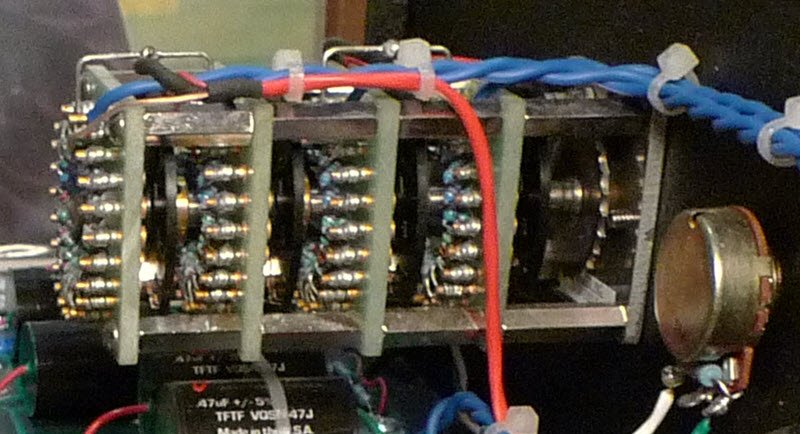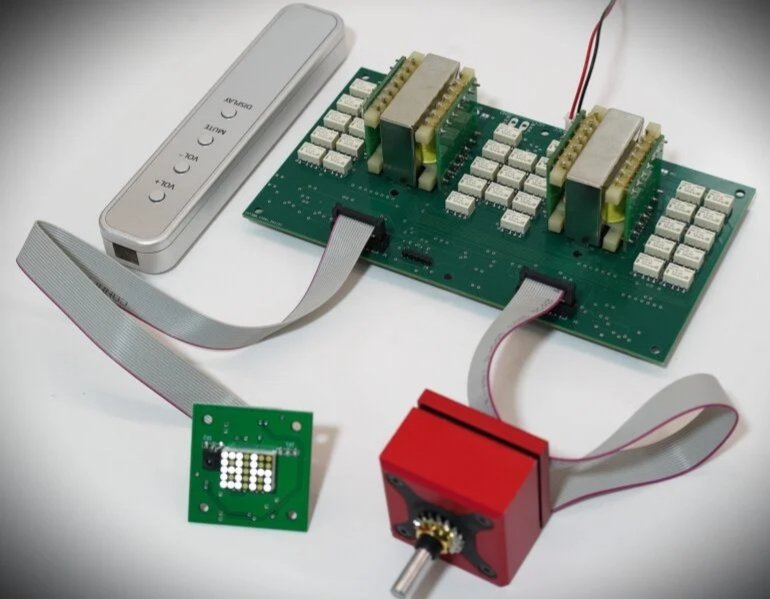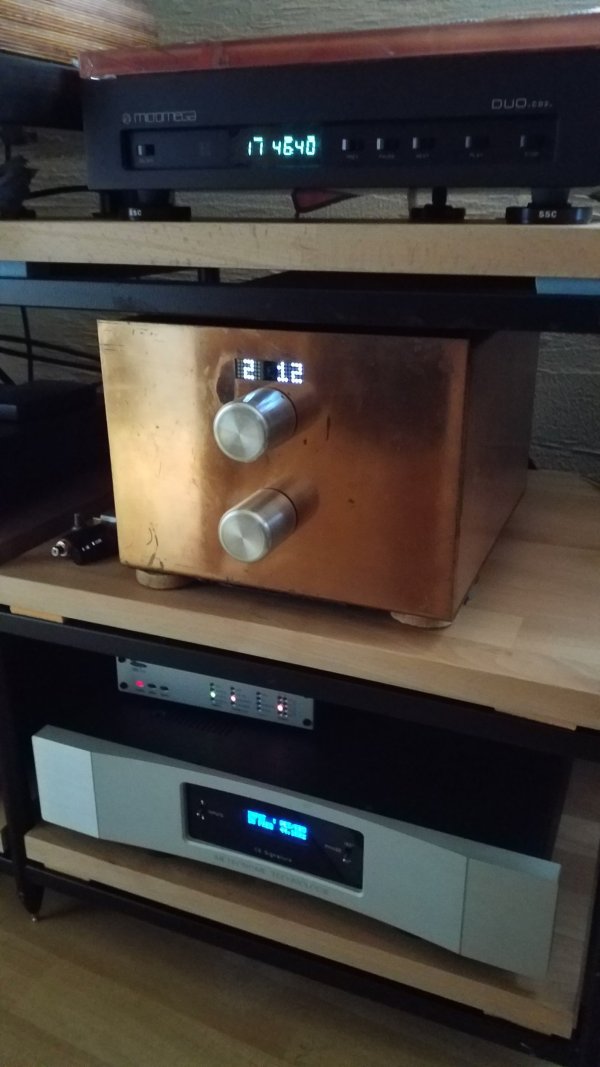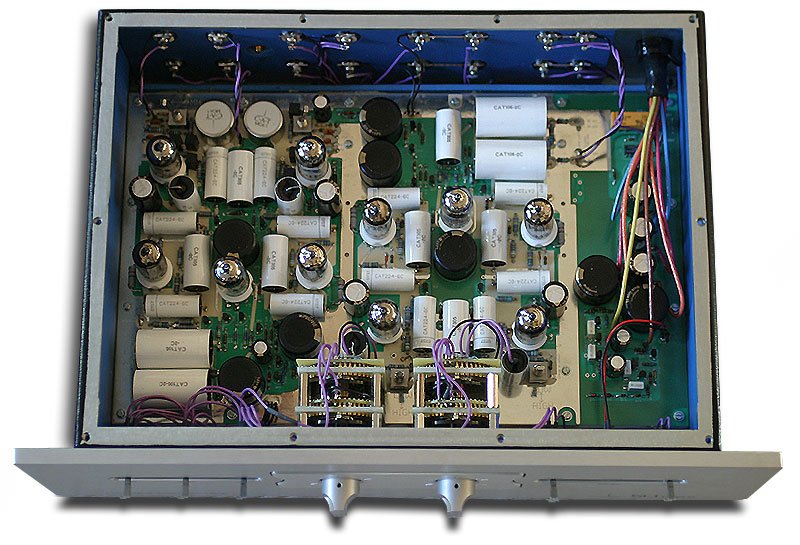One of these was recently for sale for $4-5000. I considered making an offer but asked my dealer first for his opinion. He told me not to get it.
Natural Sound
- Thread starter PeterA
- Start date
You are using an out of date browser. It may not display this or other websites correctly.
You should upgrade or use an alternative browser.
You should upgrade or use an alternative browser.
There is no comparison between tone control and adjusting a crossover point. Tone control is adding circuit, even if you keep the switch off.
By changing crossover you are not adding any additional component in the signal path that wasn’t there when you bought it. It’s not woofer cooking either, weird terminology for someone who doesn’t understand it but wants to show “industry expertise”
By changing crossover you are not adding any additional component in the signal path that wasn’t there when you bought it. It’s not woofer cooking either, weird terminology for someone who doesn’t understand it but wants to show “industry expertise”
One of these was recently for sale for $4-5000. I considered making an offer but asked my dealer first for his opinion. He told me not to get it.
Give it a shot
Peter there is nothing wrong with adding circuit .
Well made circuits.
Try to get your hands on a FMA 233 linearizer that thing is next level.
I do think it excepts only balanced signals
When I listen to live jazz or classical, the bass never really draws attention to itself unless it’s an isolated tympani whack or double bass solo. Usually the bass just keeps rhythm and it is not emphasized over the other instruments. Hello this also depends on the recording or the pressing. I
And very much so on the composer. Larger orchestral works can have complex rthymic support below the more thematic upper frequency instruments (woodwinds, violins). Lower brass (trombones, baritones, tubas), double bass, lower percussion -- horns and cellos can go either way -- can be heard mixing it up with each other or in ensemble.
Yes, keeping rhythm, yet doing so in interesting ways. Maybe not calling attention to themselves at the expense of balance nonetheless I find myself following the different low frequency instruments. This can be a concious effort, so it is the listener who changes the balance -- part of what's cool about home stereo is that you can replay multiple times and listen in different ways.
Amazing quality..precision next level
View attachment 159678
Makes me think of the hand built precision of the Atma-Sphere MP-1 volume control.

All this straight wire with gain stuff been there done that . 
In that regard i think my CAT legend Volume control is more beautifull/ nicely done
FMA 233 the real deal
In that regard i think my CAT legend Volume control is more beautifull/ nicely done
FMA 233 the real deal
Attachments
Last edited:
How? There is no such thing, so I don't see how you could have "done it".All this straight with gain stuff been there done that
How? There is no such thing, so I don't see how you could have "done it".
I have listened to countless simplistic amp designs over the years .
The Zanden 7000 SET i had was pretty simply designed
I understand, but a system is always composed of many components: analog source, phono preamp, preamp, amplifier, speaker crossover, cables. In that context, you cannot really tell whether a component is really "transparent" or simply adding some form of distortion that somehow yields a pleasing result given the distortion of all the other components... there is simply no way of knowing.I have listened to countless simplistic amp designs over the years .
The Zanden 7000 SET i had was pretty simply designed
I use my diy tube preamp this autoformer volume controll with inputselector. Exsample picMakes me think of the hand built precision of the Atma-Sphere MP-1 volume control.
View attachment 159690


Last edited:
This khozmo stuff sounds really good, but expensive in pure silver 1.2kIf iRobot was a VC …
When you search a world class preamp use hattor tubebuffer stage with a silver tvc passive preamp. Then can you use long cables with no problems.
then the air will be tight even for any expensive preamps trust me

 hattor.com
Passive preamp
hattor.com
Passive preamp

 hattor.com
Price ~ 8k full balanced
hattor.com
Price ~ 8k full balanced
then the air will be tight even for any expensive preamps trust me

Tube Active Stage
The Hattor Audio Tube Active Stage is specifically intended for use with the Hattor Audio Ultimate Passive Pre (The Big). The price for the unit, $1,900, is in addition to the price for the passive preamp. However, you can use this unit as a standalone buffer/gain stage with other passive...

AUTOFORMER Reference Preamplifier
Review https://hifiknights.com/reviews/preamplifiers/hattor-audio-arp/ Autoformer preamplifiers are specialized devices that use an autoformer, a type of transformer, to match impedance and improve the performance of an audio system. Here are some of the positive aspects of autoformer...
Last edited:
Those are now so old that the filter capacitors in the power supplies should be replaced! Leaky filter caps can damage power transformers! That is something that would likely be very hard to find for something like this so its important to get this done if the unit is in daily service.
One of the very nice things about the Harmon Kardon Citation 1 preamp was its tone controls were built up on switches, so when set to flat they really were flat.Agreed. It's one of the silliest "high-end" inventions of the last few decades to declare that tone controls compromise the "purity" of the signal path. The Octave HP 700 preamp has an optional tone control which I did choose for my unit. Even though I rarely use it, it can come in extremely handy with some recordings to make them listenable (I sometimes use it on bass-shy rock recordings, life saver, really).
The tone control is very, very transparent, but when not using it, you simply bypass it entirely with a switch -- so there you have your "purity" of signal path after all. In other words, there is no rational reason to have no tone control at all in the high-end.
The issue with transformers used in a volume control application is the loading of the transformer. Since transformers transform impedance, the load at the output must vary with the change of taps. If not loaded correctly the transformer can 'ring' (distort; load impedance at the output is too high) or it can roll off (load impedance at the output is too low). IOW it must be critically damped for best response. Another reason for proper loading is if its not loaded (especially if the load impedance is too high) the inter-winding capacitance of the transformer will act like a capacitor bypassing the output, which will result in the output frequency response not being flat. To do all this correctly you have to have multiple switch contacts to provide the correct loading. The load of the input of the amplifier must not affect the results; this generally means the impedances used should be kept low.I use my diy tube preamp this autoformer volume controll with inputselector. Exsample pic
View attachment 159695
If I'm not mistaken this sounds alot like my modified "Zilch Z19" xover, which has two knobs one for overall volume of the horn and one for the slope of the xover allowing it to have a better ballance with the 15"woofer in my 2way horn/full range speaker. Neither of the knobs do any thing to the woofer signal path.500 Hz is the crossover point between the two drivers. The level control simply changes the balance between the two drivers.
I find that turning down the level of the upper horn brings a little bit more weight to the presentation when I play the Colibrí cartridge.
With the DST, the presentation sounds most natural when the upper horn is not attenuated.
If I'm not mistaken this sounds alot like my modified "Zilch Z19" xover, which has two knobs one for overall volume of the horn and one for the slope of the xover allowing it to have a better ballance with the 15"woofer in my 2way horn/full range speaker. Neither of the knobs do any thing to the woofer signal path.
Hello Joel. I have one knob and as far as I can tell, it only controls the level or volume of the upper horn. It does not affect the slope of the crossover and it has nothing to do with the woofer.
If it's not easy to construct, you haven't thought about it for very long. That's what my master said during my apprenticeship. and that doesn't just apply to electrical engineeringSimple or too simple , too simple not so good …!
All the advantages and disadvantages are explained very well here.The issue with transformers used in a volume control application is the loading of the transformer. Since transformers transform impedance, the load at the output must vary with the change of taps. If not loaded correctly the transformer can 'ring' (distort; load impedance at the output is too high) or it can roll off (load impedance at the output is too low). IOW it must be critically damped for best response. Another reason for proper loading is if its not loaded (especially if the load impedance is too high) the inter-winding capacitance of the transformer will act like a capacitor bypassing the output, which will result in the output frequency response not being flat. To do all this correctly you have to have multiple switch contacts to provide the correct loading. The load of the input of the amplifier must not affect the results; this generally means the impedances used should be kept low.
I'm very satisfied with the solution in my preamp. Khozmo has been building excellent volume control solutions for almost 20 years, and I have no doubts about their capabilities.
Just listen to the Hattor audio preamp ,they play at a very high level and then judge.
The preamp I'm playing at home can drive +10dBm, which is to say +10VU into a 600 Ohm load and does that with direct-coupling; no transformers or coupling caps.Just listen to the Hattor audio preamp ,they play at a very high level and then judge.
The Khozmo is a very nice unit. We have a motorized version here in the shop.
Similar threads
- Replies
- 56
- Views
- 4K
- Replies
- 55
- Views
- 3K
- Replies
- 1
- Views
- 900
- Replies
- 16
- Views
- 4K
- Replies
- 12
- Views
- 3K
| Steve Williams Site Founder | Site Owner | Administrator | Ron Resnick Site Owner | Administrator | Julian (The Fixer) Website Build | Marketing Managersing |



